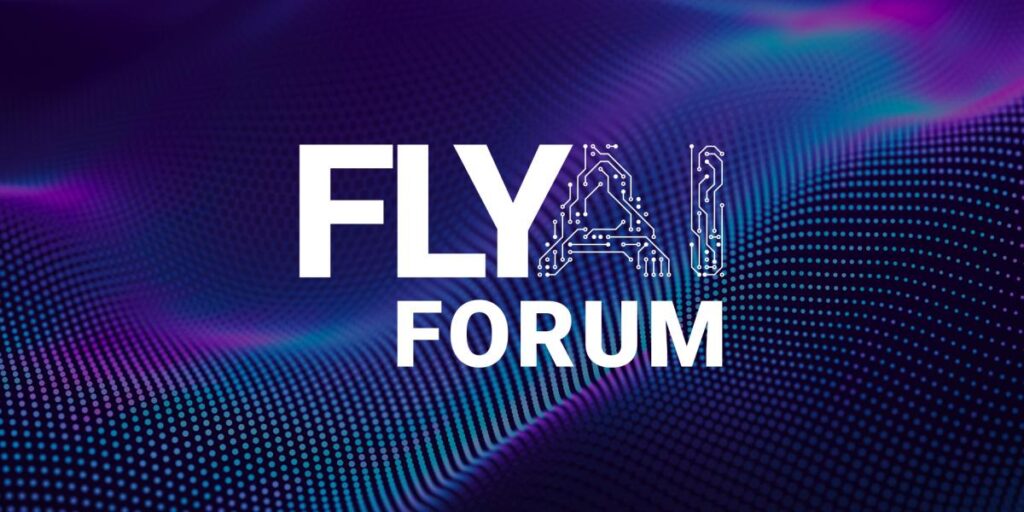On 22–23 April, Aero EDIH representatives Jan-Olof Ehk, Martin Holmberg, and Rasmus Lundqvist attended the Fly AI Forum 2025, held at EUROCONTROL’s headquarters in Brussels. The event brought together aviation industry stakeholders to explore the transformative impact of artificial intelligence (AI) on the sector.

Day 1
The event clearly demonstrated the aviation industry’s strong commitment to integrating AI technologies, tackling regulatory challenges, and enhancing operational capabilities through collaboration. Real-world applications typically occur in non-safety-critical areas or are deployed solely as voluntary support systems. Success hinges on close cooperation between AI specialists and experts within the aviation sector’s specific domains. The key theme of the day was reliability, reflected across the five main focus areas:
Opening Keynote
The European Commission, EASA, EUROCAE, SESAR Joint Undertaking, EUROCONTROL, and IATA opened the forum with key insights, followed by a keynote speech delivered by a representative from THALES, who addressed the future challenges of AI within the aviation industry.
The main issues highlighted included managing ethical and legal implications, ensuring data integrity and security, combating misinformation and bias, avoiding total reliance while fostering creativity, improving explainability and transparency, and addressing technical complexity.
Machine Learning in Aviation
Several research projects were presented, including a SESAR network solution for Trajectory-Based Operations (TBO) using a probabilistic machine learning approach, AI studies on contrail formation, a tactical opportunities recommender for air traffic control (ATC), and KAIRO – an AI-based weather information solution for the aviation sector. These initiatives reflect the latest developments in research on how AI can enhance air traffic management (ATM) and improve operational efficiency.
Compliance Demonstrations
Several projects were presented, showcasing how AI applications are being adapted to meet safety and certification requirements. These included BEACON (an automated taxiing system for aircraft at airports developed by Boeing and EASA), Airbus’s work on the verification of surrogate models, and EUROCONTROL’s ISOBAR project, which focuses on visualising the impact of weather forecasts on operations.
Operational Integration
The sessions focused on practical real-time applications of AI, such as anomaly detection in ATM systems, machine learning-based forecasting for airport operations, a chatbot assisting users in finding operational information based on airport data, and AI-driven tools for managing air traffic flows and delays.
Networking and Exhibitions
The day concluded with a networking event, where participants had the opportunity to meet exhibitors such as Boeing, Thales, Honeywell, SJU, EASA, and Eurocontrol, and to discuss AI innovations within the aviation industry.


Day 2
During the second day, the focus was on how artificial intelligence (AI) is being integrated into the aviation sector, with particular emphasis on human-AI interaction, applications of generative AI, and the development of regulatory frameworks.
Human-AI Collaboration and Societal Impacts
The day began with a focus on the societal and human aspects of artificial intelligence (AI) in the aviation sector. Key discussion points included the ASTAIR project, which explores how automation can be applied to airport ground operations, and the JARVIS project, which is developing AI-based digital assistants for pilots, air traffic control (ATC), and airports. The discussions also addressed adaptive systems aimed at improving collaboration between humans and AI within ATC environments. Another important topic was the distinction between human and algorithmic decision-making, and how regulatory and policy frameworks need to evolve alongside advances in AI.
The sessions highlighted the importance of integrating AI in ways that strengthen and complement human expertise while addressing societal considerations. Two critical questions were identified: how AI systems can be validated against existing regulations, and how these regulations must, in turn, be adapted to accommodate new technologies.
Advancements in Generative AI
The forum highlighted the transition from traditional machine learning to generative AI (GenAI) applications within the aviation sector:
- Large language models: Utilisation in aviation-related contexts.
- GenAI in production: Experiences and insights into how GenAI systems can be implemented in operational environments.
- NOTAM management: AI-driven tagging, optimisation, and transformation of Notices to Airmen (NOTAMs) into digital formats.
These advancements demonstrate AI’s potential to enhance operational efficiency and improve information management within aviation. Furthermore, IATA possesses extensive datasets that can be utilised for AI applications.
Interactive Breakout Sessions
The Fly AI Forum concluded with sessions that enabled a collaborative exploration of AI’s multifaceted impact on the aviation industry, while also fostering in-depth discussions in the following areas:
- Regulatory Approaches: Strategies for regulating AI within the aviation sector.
- Standards for Trustworthy AI: Development of standards to ensure the reliability of AI systems.
- Human-AI Collaboration: Exploration of practical applications of human–AI teamwork in the aviation industry.
- Accelerated Innovation: Assessment of AI’s role as a catalyst for innovation.
- Assessment of Human Competence: Use of AI to evaluate and enhance human performance.
More information and inspiration
The full programme, along with all presentations and pictures, is available on EUROCONTROL’s website.















